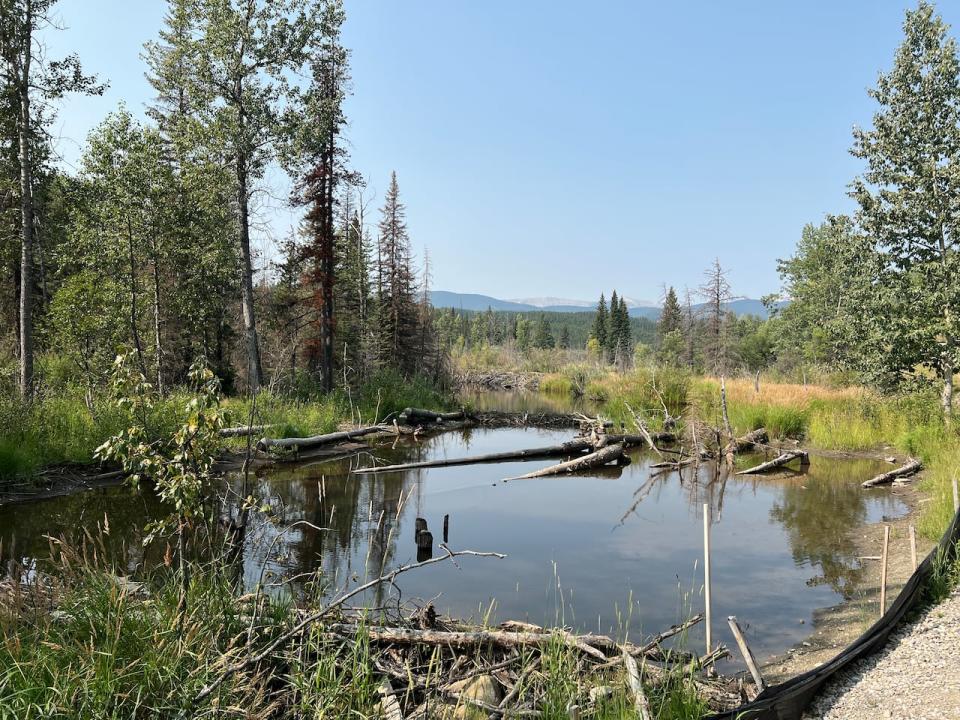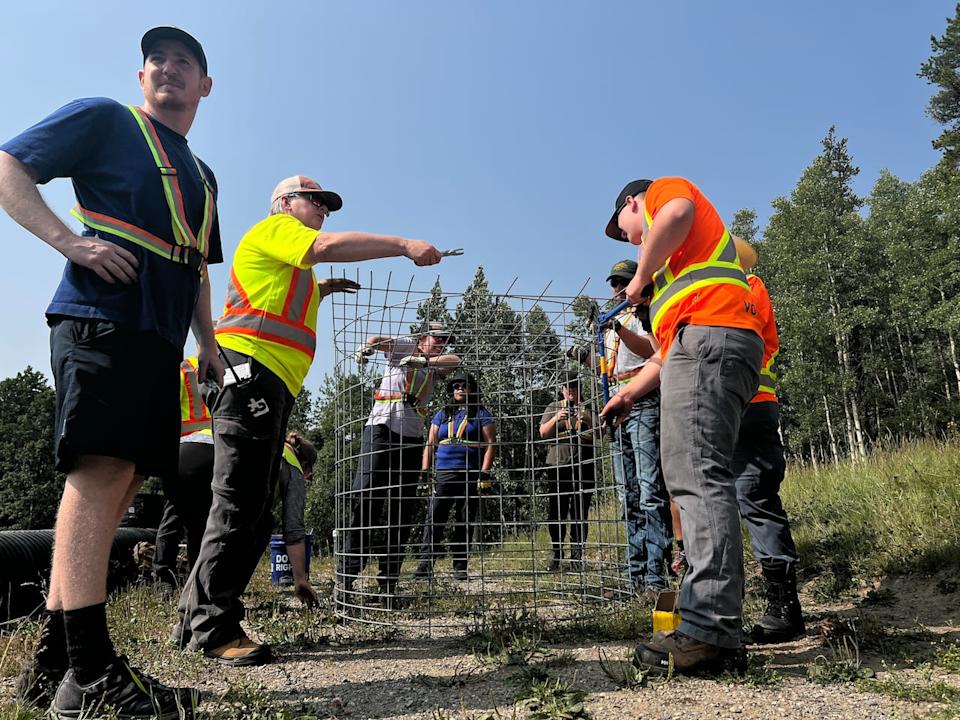Bragg Creek beaver problem be damned! Groups turn flood risk into coexistence opportunity

From the gravel on Mountain Road you can see the beaver's work. There's pools of water held back by stacks of twigs and branches. And headed into the thick of the woods, more of these animal-made dams.
It's a pretty sight cast against the West Bragg Creek scenery.
The beavers really settled into the region after the 2013 flood. When these well-meaning engineers move in, they start working. Beavers are a bit compulsive: they hear flowing water, and have to block it up.
And while it's great for wildlife and fish — fire, flood and drought resilience — it can be a bit of a headache.
"They created one dam which really threatened to flood our Mountain Road," said Bragg Creek Trails crew lead Michele White.

Bragg Creek Trails has worked to carve and keep up trails in the West Bragg Creek Day Use Area. (Helen Pike/CBC)
Bragg Creek Trails has worked hard to carve and keep up trails in the West Bragg Creek Day Use Area. And one of the key roads through, Mountain Road, is kind of like the collector road for all the loops and trails around it.
Quickly, a company was hired to bring loads of gravel and build the road up enough to keep it out of harm's way. But that fix wasn't going to be a permanent one. White said it was pretty clear the beavers would eventually dam again.
"The beavers were really industrious. Their families were growing so they were creating more dams," she said.
At this point, typically the beavers would be relocated, their dams destroyed. It's a common practice for land owners who see them as pests, easy to remove and difficult to live with.
But White said Bragg Creek Trails wanted to find another way.
Meetings between Alberta Parks, The Alberta Riparian Habitat Management Society, also known as "Cows and Fish", and the Elbow River Watershed Partnership started. Together these experts had ideas about how to coexist with the beavers.
They settled on a pond-leveller: a pipe that's installed upstream, shrouded with metal grate fencing, and wedged into the top of the dam.

Groups have been working towards managing water flow while working on human-beaver coexistence. (Helen Pike/CBC)
"We want to be able to live alongside of the beavers, let them continue with their good work and then we can still enjoy the landscape from whatever perspective it is," said the Elbow River Watershed Partnership's executive director, Flora Giesbrecht.
"From this lens, it's for recreation and then access for some of the infrastructure and especially in the winter, this road is very popular."
Giesbrecht has seen some land owners embrace coexistence. Something she and all the groups helping today want to see more of.
Approvals for this kind of thing take time, several years in this case.
Grant money helped buy supplies, but the labour — that's all volunteer work.
Riparian specialist Kerri O'Shaughnessy with Cows and Fish used the opportunity to teach the volunteers how it's done.
As an added bonus, her crash-course will help get the Bragg Creek pond-leveller installed
"We're doing it as a workshop and a learning opportunity for some interested like-minded organizations that are looking to do similar things in coexisting with beavers wherever they're working," she said.
They bend the fence into shape, cut sharp ends off, more bending. Once all the pieces are ready, the contraption is walked to the water, and waded into place.
"So once it's in, if all goes well, we're not going to see it at all, it's gonna be underwater and it'll be sort of like a permanent leak through the dam," she said. "That is going to be good for beaver habitat, fish habitat as well as help mitigate the road issue."


